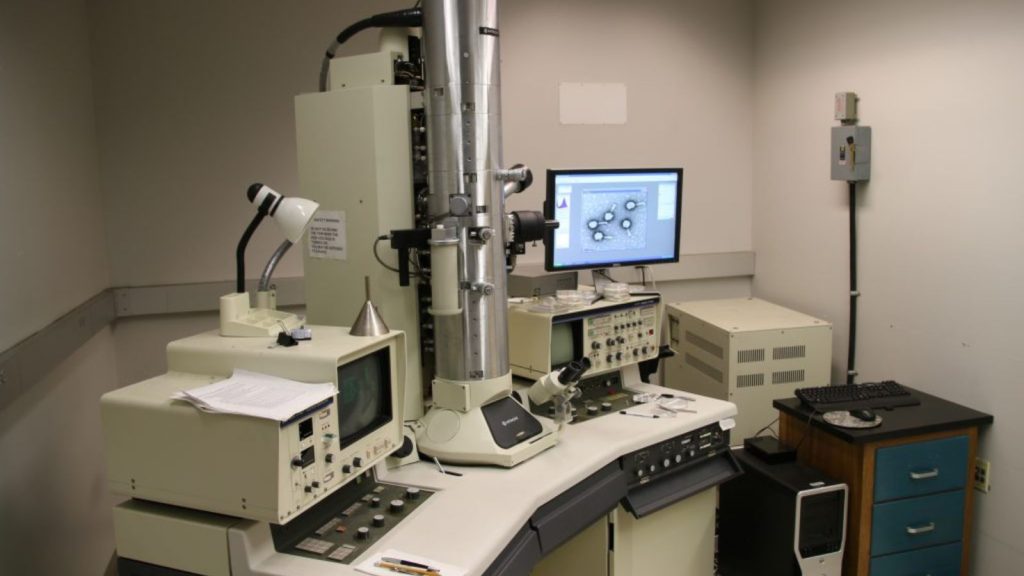Quantum mechanics might sound like something out of a sci-fi novel, but it’s actually all around us in our daily lives. This branch of physics, which deals with the behaviour of matter and energy at the smallest scales, underpins many of the technologies we use without a second thought. From the devices in our pockets to the medical equipment in hospitals, quantum mechanics is quietly revolutionising our world. It’s a field that challenges our intuitions about how the universe works, yet its practical applications are astonishingly commonplace.
Here are 15 everyday technologies that rely on the weird and wonderful world of quantum mechanics. You might be surprised to learn just how much quantum physics influences your daily routine!
Smartphones

The heart of your smartphone, its microprocessor, relies on quantum tunnelling. This phenomenon allows electrons to pass through barriers they shouldn’t be able to cross, according to classical physics. Without it, the transistors in your phone wouldn’t work. Quantum mechanics also plays a crucial role in your phone’s GPS system, which needs to account for relativistic effects to maintain accuracy. Moreover, the CMOS image sensors in your phone’s camera use the photoelectric effect, another quantum phenomenon, to convert light into digital images.
LED Lights

The energy-efficient LED lights illuminating our homes and streets are a triumph of quantum mechanics. LEDs work through a process called electroluminescence, where electrons release energy as light when they jump between different energy levels in a semiconductor. This quantum leap of electrons produces the light we see, making our cities brighter and our energy bills lower. The colour of the light emitted can be precisely controlled by adjusting the composition of the semiconductor, a feat only possible due to our understanding of quantum energy levels.
Laser Pointers

That little red dot your cat chases is quantum mechanics in action. Lasers work through a process called stimulated emission, where atoms are excited to higher energy states and then release that energy as synchronized light waves. This quantum process creates the focused, coherent beam of light that makes lasers so useful in everything from entertainment to surgery. The precise wavelength of laser light is determined by the quantum energy levels of the lasing medium, allowing for applications ranging from DVD players to cutting-edge medical treatments.
MRI Machines

Magnetic Resonance Imaging (MRI) machines peer inside our bodies using the quantum property of spin. The machine aligns the spin of hydrogen atoms in our tissues and then measures how they realign when the magnetic field is turned off. This quantum dance of protons allows doctors to create detailed images of our internal organs without harmful radiation. The sensitivity of MRI is so great that it can detect changes in blood flow associated with brain activity, forming the basis of functional MRI (fMRI) used in neuroscience research.
Solar Panels

The photovoltaic effect that powers solar panels is a quantum phenomenon. When photons from sunlight hit the atoms in a solar cell, they knock electrons loose. This movement of electrons creates an electric current. Understanding and optimising this quantum process has led to increasingly efficient solar panels, helping us harness clean energy from the sun. Recent advances in quantum dot solar cells promise to push efficiencies even higher, potentially making solar energy more competitive with fossil fuels.
Computer Hard Drives

The data stored on your computer’s hard drive is protected by quantum mechanics. Hard drives use a property called Giant Magnetoresistance (GMR), which relies on the quantum behaviour of electrons in thin layers of magnetic materials. This quantum effect allows for incredibly compact data storage, enabling us to carry vast amounts of information in our pockets. The discovery of GMR was awarded the Nobel Prize in Physics in 2007, highlighting its revolutionary impact on data storage technology.
Fluorescent Lights

While being phased out by LEDs, fluorescent lights still illuminate many offices and homes. They work through a quantum process where electrons in mercury vapour are excited by an electric current. When these electrons return to their ground state, they emit ultraviolet light, which is then converted to visible light by the phosphor coating inside the tube. The specific quantum energy levels of mercury atoms make them particularly efficient at producing ultraviolet light, which is why mercury vapour has been the go-to choice for fluorescent lighting for decades.
Digital Cameras

The sensors in digital cameras rely on the photoelectric effect, a quantum phenomenon where light particles (photons) knock electrons out of a material. This effect, which puzzled classical physicists and helped launch quantum theory, is what allows your camera to convert light into the digital images you share on social media. Modern CMOS sensors can detect individual photons, pushing the boundaries of low-light photography thanks to our deep understanding of quantum mechanics.
Smoke Detectors

Many smoke detectors use a tiny amount of radioactive material, typically americium-241. The quantum process of radioactive decay ionises air molecules in the detector’s chamber. When smoke enters, it disrupts this process, triggering the alarm. This quantum-based safety device has saved countless lives since its invention. The long half-life of americium-241 (432.2 years) ensures that these detectors remain effective for decades without needing replacement of the radioactive source.
Electron Microscopes

Electron microscopes can see objects thousands of times smaller than what’s visible with light microscopes. They work by exploiting the wave-like nature of electrons, a key principle of quantum mechanics. By using electrons instead of light, these microscopes can resolve structures at the atomic level, revolutionising fields from materials science to biology. Recent advances in aberration correction have pushed the resolution of electron microscopes below 0.05 nanometres, allowing scientists to directly image individual atoms and their bonds.
Magnetic Resonance Spectroscopy

Similar to MRI, Magnetic Resonance Spectroscopy (MRS) uses the quantum properties of atomic nuclei to analyse the chemical composition of tissues. This technique allows doctors to detect metabolic changes in the brain, helping diagnose conditions like Alzheimer’s disease or brain tumours without invasive procedures. The quantum behaviour of protons in different molecules produces unique spectral patterns, creating a chemical fingerprint of the tissue. MRS can also be used to study the metabolism of tumours in real-time, helping oncologists tailor treatments to individual patients.
Quantum Cryptography

While not yet widespread, quantum cryptography is beginning to emerge in high-security applications. It uses the quantum property of entanglement to create unbreakable encryption keys. Any attempt to intercept the key disturbs the quantum state, alerting the users to the breach. This technology promises to revolutionise data security in an age of increasing cyber threats. Several countries, including China and the United States, are investing heavily in quantum communication networks, with China already demonstrating intercontinental quantum key distribution via satellite.
Atomic Clocks

The most accurate timekeepers in the world, atomic clocks, rely on the quantum behaviour of atoms. They measure time by tracking the oscillations of atoms as they change energy states. These clocks are so precise that they would only lose one second in millions of years. They’re crucial for GPS systems, internet synchronisation, and financial transactions. The latest optical lattice clocks are so accurate that they can detect changes in gravitational time dilation over height differences of just a few centimetres on Earth’s surface.
Telecommunications

The fibre optic cables that form the backbone of our global communications network rely on quantum mechanics. The light signals travelling through these cables are generated by quantum processes in laser diodes. Moreover, the signals are amplified along their journey using erbium-doped fibre amplifiers, which exploit the quantum properties of erbium atoms to boost the signal without converting it to an electrical signal first. Recent developments in quantum repeaters promise to extend the range of quantum communication, potentially enabling a global quantum internet in the future.
Superconducting Magnets

The powerful magnets used in MRI machines and particle accelerators often rely on superconductivity, a quantum effect where certain materials lose all electrical resistance at very low temperatures. This allows for the creation of incredibly strong magnetic fields with relatively little power input. Research into high-temperature superconductors could lead to more efficient power transmission and levitating trains in the future. The discovery of room-temperature superconductors, while still controversial, could revolutionise energy technology if confirmed and made practical.
21 Things Pilots Are Forbidden to Do During Flights

Have you ever wondered what rules pilots must follow while they’re in the cockpit? Being a pilot is a job that comes with a lot of responsibility and a strict set of rules to ensure the safety of everyone on board.
These rules ensure that pilots maintain the highest standards of safety and professionalism while flying. By adhering to these guidelines, they help ensure that every flight reaches its destination safely.
Read More: 21 Things Pilots Are Forbidden to Do During Flights
15 Worst British Cars That Were Truly A Nightmare to Own

Ever had a car that seemed more at home in the garage than on the road? You know, one of those vehicles that made every drive feel like a gamble—”Will we make it this time?” If that sounds familiar, you might find an old nemesis (or should I say, chassis?) on this list. Join me on a slightly exasperating, yet nostalgic journey as we revisit some of the most frustratingly unreliable British cars ever made.
Read More: 15 Worst British Cars That Were Truly A Nightmare to Own
Katy Willis is a writer, master herbalist, master gardener, and certified canine nutritionist who has been writing since 2002. She’s finds joy in learning new and interesting things, and finds history, science, and nature endlessly fascinating.

